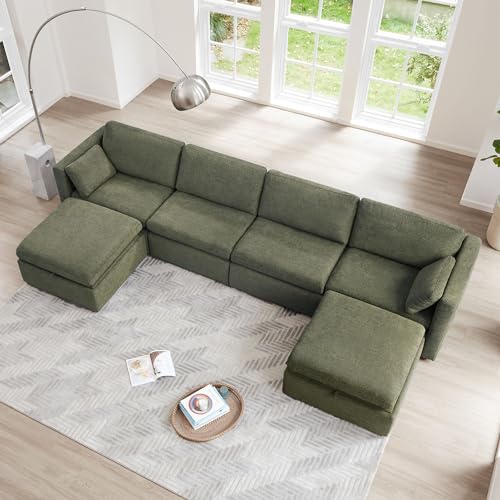10 Misconceptions That Your Boss May Have Regarding What Are U Shaped …
페이지 정보

본문
 What Are cheap u shaped sectional Shaped Valleys?
What Are cheap u shaped sectional Shaped Valleys?A U-shaped valley is an ancient geological formation with steep, high sides and flat or rounded valley bottom. They are the result of glaciation and are frequently filled with lakes, rivers, sand traps on golf courses, kettle lakes (water hazards), and other such natural features.
Glacial erosion creates u shaped sofa beds-shaped valleys when rocks are removed from the sides and bottom of the valley. These valleys can be seen in mountainous regions all over the world.
Glaciers are responsible for forming them
Glaciers are massive bodies of ice that form on the tops of mountains and then slide down them. As they degrade the landscape they create U-shaped valleys that have flat floors and steep sides. These valleys are different from the valleys of rivers that are generally shaped like the letter V. Although glacial erosion can occur in many places, these valleys are especially characteristic of mountain areas. In fact, they are so distinctive that you can tell if the landscape was created by glaciers or by rivers.
The formation of a U-shaped valley starts with an existing V-shaped river valley. As the glacier erodes it, it expands into the V-shaped valley of the river, and forms an inverted U-shape. The ice also damages the surface of the ground, causing the sides of the valley to have high and straight walls. This process is called glaciation and requires the strength of a lot to scour the earth in this way.
As the glacier continues to erode the landscape, it makes the valley larger and deeper. The ice is less frictional than the rocks. As the glacier travels down the valley, it causes abrasion on the rock surfaces and pulls the weakend rocks away from the valley walls through a process called plucking. These processes work together to broaden, smoothen and deepen the U-shaped valley.
These processes also cause a small side valley to be left 'hanging' above the main valley. This valley is sometimes filled with ribbon lakes, that are formed by the flow of water that flows through the glacier. The valley is also marked with striations and ruts, till on the sides as well as moraines and till on the floor.
The world is full of U-shaped valleys. They are common in mountainous regions, such as the Andes, Alps, Caucasus, Himalaya and Rocky Mountains. In the United States, they are typically found in national parks. Examples include the Nant Ffrancon valley in Wales and Glacier National Park in Montana. In some instances, these valleys extend to coastal locations and then become Fjords. This is a natural process that happens when the glacier melts, and it could take hundreds of thousands of years to get these valleys created.
The ocean's depths are deep
U-shaped valleys are distinguished by steep sides that curve at the bottom and a wide, flat valley floor. They are created by river valleys which have been filled with glaciers during the Ice Age. Glaciers erode valley floors by cutting and abrasion which makes the valley widen and deepen more evenly than with the flow of a river. These types of features are common throughout the globe in mountainous areas, including the Andes, Alps, Himalayas, Rocky Mountains, and New Zealand.
Glacial erosion of a river valley may transform it into a u-shaped valley by deepening and enlarging it. The erosive force of the glacier can also cause smaller side valleys to be left hanging above the main valley which is usually identified by waterfalls. These are referred to as "hanging valleys" because they are suspended above the main valley when the glacier recedes.
These valleys are often enclosed by forests and contain lakes. Some valleys are dry and are used for farming, while others are flooded and can be explored as part of a hiking or kayaking excursion. Many of these valleys are located in Alaska in the region where melting glaciers is the most evident.
Valley glaciers are massive like river-like flows that slowly slide down mountain slopes. They can be as deep as over 1000 feet, and are the most common type of valley erosion in the alpine regions. They eat away at the rocks on the bottom of the valley leaving the valley with holes or depressions that are then filled with water. The lakes that result are wide and thin, and they can be located in the peaks of certain mountains.
A glacial trough is a different type of valley. It is a U form valley that extends out into the salt water to form a fjord. They can be found all over the world, including Norway and are referred to as fjords. They are formed by melting glaciers and can be seen on maps of the globe. They are characterized by their steep sides and round sides in the U-shape. The walls of troughs are typically made of granite.
The slopes are steep
A U-shaped valley is a geomorphological feature that has steep sides, high sides, and a rounded base. They are common in mountainous regions and are usually formed by glaciers. It is because glaciers move slowly downhill and then scour the land. Scientists used to believe that glaciers wouldn't be able to carve valleys because they were so soft, but now we know they do create these shapes.
Glaciers create distinctive u shaped sectional grey-shaped valleys through the processes of abrasion as well as plucking. Through erosion, these processes can widen, steepen, and deepen V shape valleys in rivers. The slopes of the valley bottom are also altered. These changes happen in the front of a glacier when it traverses a valley. This is the reason why a U form valley is typically larger at the top than at the bottom.
Sometimes, u shaped leather sectional-shaped valleys may be filled with lakes. The kettle lakes are formed in hollows that have been eroded by the glacier, or blocked by the moraine. The lake may be a temporary one as the glacier melts or it could remain after the glacier has receded. They are often located in conjunction with cirques.
Another kind of valley is one with a flat floor. This is a valley formed by streams that degrade the soil, however it doesn't have the same steep slope as an U-shaped valley. They are generally located in mountainous areas and are often older than other types.
There are many types of valleys in the world. Each one has its own unique appearance. The most well-known is a V-shaped valley, however, other forms include u shape recliner sofa-shaped valleys and rift valleys. A rift valley is one that is formed in areas where the crust of the earth is breaking apart. These are usually narrow valleys with steep sides. This is evident in the Nant Ffrancon Valley, located in Snowdonia.
There are a variety of widespread.
U-shaped valleys are distinguished by their broad bases, unlike V-shaped ones. They are typically found in mountain ranges and are shaped by glaciers. Glaciers are massive blocks of snow and ice which erode the landscape as they move downhill. They cause valleys to be eroded by friction and erosion. This is referred to as scouring. As they degrade the landscape, the glaciers form distinct shapes that resemble an U-shaped letter. These valleys, often referred to as contemporary u shaped sectional (Learn Even more Here)-shaped valleys, can be found in numerous locations around the globe.
The valleys are formed when glaciers erode the valleys of rivers. The glacier's slow movements and weight is able to erode the valley's floor and sides creating a distinct U shape. This process is known as glacial erosion and has resulted in some of the most beautiful landscapes on Earth.
These valleys may also be called trough valleys or glacial troughs. These valleys can be found all over the world, but especially in regions with glaciers and mountains. They can range in dimensions from a few meters to hundreds of kilometers. They can also vary in length and depth. The fluctuation in temperature will be higher the deeper the valley.
When a U-shaped valley is filled with water, it forms a ribbon lake or fjord. The ribbon lakes are formed in the valleys in which the glacier cut the rock with less resistance. They can also form in valleys, in which the glacier is stopped by walls.
U-shaped valleys could also include other glacial features, such as moraine dams, hanging valleys and Erratics. Erratics, also known as massive boulders, are formed by a glacier as it moves. The erratics are frequently used to mark the boundaries of glaciated areas.
 Hanging valleys are smaller side valleys that are hanging above the main valley created by the glacier. These valleys aren't as deep as the main valley, and they are ice-free. These valleys are carved out by tributary ice and are often covered by waterfalls.
Hanging valleys are smaller side valleys that are hanging above the main valley created by the glacier. These valleys aren't as deep as the main valley, and they are ice-free. These valleys are carved out by tributary ice and are often covered by waterfalls.- 이전글See What 2ft 6 Mid Sleeper Cabin Bed Tricks The Celebs Are Making Use Of 24.09.21
- 다음글Are You Good At Chicken Sandwich Events? This is A quick Quiz To seek out Out 24.09.21
댓글목록
등록된 댓글이 없습니다.